Cisco NM-HD-2VE Enhanced Voice/Fax Network Module
Cisco IP Communications Voice/Fax Network Modules for the Cisco 2800, 2900, 3800, and 3900 Series Unified Communications Routers
The Cisco ® IP Communications voice/fax network modules provide enterprises, managed service providers, and service providers the ability to directly connect the public switched telephone network (PSTN) and traditional telephony equipment (private branch exchange [PBX], key system, analog telephones, fax machines, etc.) to Cisco 2800, 2900, 3800 and 3900 Series Unified Communications routers. This set of Cisco IP Communications voice/fax network modules delivers the most versatile combination of analog and digital voice and data capabilities in a single network module. As a completely integrated component of the Cisco Unified Communications solution including Cisco Unified Communications Manager (UCM), Cisco IP phones, Cisco Unity ® unified messaging software, Cisco IP Contact Center (IPCC), and the entire line of Cisco IP Communications products, the Cisco IP Communications voice/fax network modules are a cornerstone of Cisco Unified Communications. When used in a Cisco unified communications router with Cisco UCM, Cisco Unified Survivable Remote Site Telephony (SRST), or Cisco UCM Express, the Cisco IP Communications voice/fax network module is a complete IP Communications solution for the business branch.
Figure 1 shows the IP Communications voice/fax network module with one VWIC2-2MFT-T1/E1 and one VIC3-4FXS/DID.
Figure 1. NM-HD-2VE with One VWIC2-2MFT and One VIC3-4FXS/DID
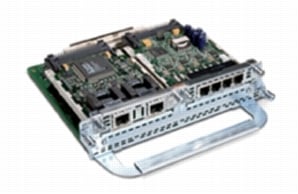
The Cisco IP Communications voice/fax network modules for the Cisco 2800, 2900, 3800, and 3900 Series unified communications routers enable packet voice technologies including VoIP (H.323, Media Gateway Control Protocol [MGCP], and Session Initiation Protocol [SIP]). Cisco Unified Communications solutions provide the means for integrating voice and data within a single network, allowing users to take advantage of services such as IP telephony, integrated services, and toll-bypass while providing an opportunity to improve productivity. By operating on Cisco IOS Software, these solutions incorporate advanced quality-of-service (QoS) features, intelligent network queuing, and standards-based encapsulation, providing efficient direct transport of both voice and fax over IP networks. Cisco IOS Software solutions enable time-sensitive voice traffic to be moved across even low-bandwidth WAN connections with the priority and quality that voice and fax demand. Transporting voice over IP networks continues to provide transport flexibility because IP can be routed across a multitude of WAN technologies (leased lines, Frame Relay, and ATM) along with providing direct connectivity to the desktop.
Figure 2 shows an IP telephony application using Cisco UCM Express and SRST in a business branch.
Figure 2. IP Telephony Application Using Cisco UCM Express and SRST in the Business Branch
The 2900 Series and 3900 Series Integrated Services Routers support Network Modules via an adapter (part number SM-NM-ADPTR).
The Cisco IP Communications voice/fax network modules support either one or two Cisco voice interface cards (VICs) or Cisco voice/WAN interface cards (VWICs) and install into network module slots for the Cisco 2800, 2900, 3800, and 3900 series unified communications routers. The Cisco VICs are daughter cards that install into the network modules and provide the interface to the PSTN and to telephony equipment (PBX, key systems, fax machines, phones). The Cisco VWICs are daughter cards that provide the interface to the PBX, PSTN, and/or WAN.
VICs include 2-port foreign exchange station (FXS), direct inward dial (DID), foreign exchange office (FXO), and E&M analog interface cards. Also available are 4-port FXS and 4-port FXO cards and a 2-port ISDN Basic Rate Interface (BRI) digital interface card providing -40V phantom power. These cards cover the entire range of analog connectivity options along with user-side and network-side digital BRI connections (Table 1). Cisco VWICs include 1- and 2-port T1 and E1 interface cards with optional drop-and-insert capability. These cards cover a full range of digital voice and WAN connectivity options and provide connectivity to the world’s PBXs, PSTNs, and Post, Telephone, and Telegraph (PTT) organizations.
Cisco IP Communications voice/fax network modules provide the gateway to Cisco Unified Communications for calls to and from the PSTN and the traditional telephony equipment. Users can deploy networks that take advantage of investments in existing telephony equipment while also deploying and integrating IP telephony immediately or in the future. These network modules enable users to operate at any point on the integrated voice, video, and data infrastructure spectrum while incrementally adding connections to both traditional telephony and IP telephony.
Table 1. Cisco Voice/WAN Interface Cards
The 2900 Series and 3900 Series Integrated Services Routers support Network Modules via an adapter (part number SM-NM-ADPTR).
|
Part Number
|
Description
|
Application
|
|
NM-HD-1V
|
1-slot IP communications voice/fax network module.
|
Supports up to four channels of analog/BRI voice using any supported coder-decoder (codec). (No support for T1/E1 or data WAN.)
|
|
NM-HD-2V
|
2-slot IP communications voice/fax network module.
|
Supports up to eight channels of analog/BRI voice using medium complexity codec or six channels using any supported codec. (No support for T1/E1 or data WAN)
|
|
NM-HD-2VE
|
2-slot IP communications enhanced voice/fax network module.
|
Supports analog/BRI/T1/E1 voice and data WAN. Supports up to 48 channels of G.711 codec, 24 channels of medium-complexity codec, or 18 channels of any supported codec. Offers maximum investment protection with support for analog/digital voice and data WAN.
|
|
VIC3-2FXS/DID
|
2-port FXS/DID voice/fax interface card.
|
FXS port is used to connect directly to phones, fax machines, and key systems. Generates battery polarity reversal and caller ID.
DID port is used to provide off-premises DID connection from central office. Serves only incoming calls from the PSTN. Does not support caller ID in DID mode.
|
|
VIC3-2FXS-E/DID
|
2-port Enhanced FXS/DID voice/fax interface card.
|
FXS port is used to connect directly to phones, fax machines, and key systems. Generates battery polarity reversal and caller ID. VIC3-2FXS-E/DID is designated as an “Off-Premise Extension Lite” product offering. This means that while the module addresses a subset of the off-premise extension applications, it should be noted that the module is not in full compliance for off-premise usage.
DID port is used to provide off-premises DID connection from central office. Serves only incoming calls from the PSTN. Does not support caller ID in DID mode.
|
|
VIC3-4FXS/DID
|
4-port FXS/DID voice/fax interface card
|
FXS port is used to connect directly to phones, fax machines, and key systems. Generates battery polarity reversal and caller ID.
DID port is used to provide off-premises DID connection from central office. Serves only incoming calls from the PSTN. Does not support caller ID in DID mode.
|
|
VIC2-2FXO
|
2-port FXO voice/fax interface card [universal card for all countries]. Also supports analog Centralized Automated Message Accounting (CAMA) on any port.
|
FXO port is used to connect to PBX or key system, or to provide off-premises connections to PSTN or PTT. Supports battery reversal detection and caller ID. These Cisco VICs can be software configured to work in all countries. Also used to connect to analog CAMA trunk to provide dedicated E-911 service (North America only)
|
|
VIC2-4FXO
|
4-port FXO voice/fax interface card [universal card for all countries]. Also supports analog CAMA on any port.
|
FXO port is used to connect to PBX or key system, or to provide off-premises connections to PSTN or PTT. Supports battery reversal detection and caller ID. These Cisco VICs can be software configured to work in all countries. Also used to connect to analog CAMA trunk to provide dedicated E-911 service (North America only)
|
|
VIC3-2E/M
|
2-port E&M voice/fax interface card.
|
Used to connect to PBX or key system as tie lines.
|
|
VIC2-2BRI-NT/TE
|
2-port BRI voice/fax interface card (configurable for either network or terminal side).
|
Used to connect as network side or user side to PBX or key system as off-premises connections (ISDN voice BRI). Supports patent-pending flexible Layer 2 and Layer 3 configurations.
|
|
VWIC2-1MFT-T1/E1
|
1-Port T1/E1 Multiflex Trunk Voice/WAN Interface Card
|
Used to connect to PBX, PSTN, or WAN using T1/E1 standard interface and provide channel drop-and-insert capability.
|
|
VWIC2-2MFT-T1/E1
|
2-Port T1/E1 Multiflex Trunk Voice/WAN Interface Card
|
Used to connect to PBX, PSTN, or WAN using T1/E1 standard interface and provide channel drop-and-insert capability.
|
|
VWIC2-1MFT-G703
|
1-Port G.703 Multiflex Trunk Voice/WAN Interface Card
|
Used to support unstructured E1 (G.703) and all features of the other Cisco MFT VWIC2 modules, including drop-and-insert.
|
|
VWIC2-2MFT-G703
|
2-Port G.703 Multiflex Trunk Voice/WAN Interface Card
|
Used to support unstructured E1 (G.703) and all features of the other Cisco MFT VWIC2 modules, including drop-and-insert. Additional flexibility is provided on the two port module with the capability to configure one port for unstructured E1 (G.703) while configuring the other for standard framed E1.
|
Table 2 shows the maximum number of Cisco IP Communications voice/fax network modules allowed per Cisco platform.
Table 2. Number of Cisco IP Communications Voice/Fax Network Modules Allowed per Cisco Platform
|
Cisco Platform
|
Maximum Number of Network Modules Allowed
|
|
Cisco 2811/2821/2851 Integrated Services Routers
|
1
|
|
Cisco 3825 Integrated Services Router
|
2
|
|
Cisco 3845 Integrated Services Router
|
4
|
|
Cisco 2901/2911/2921/2951 Integrated Services Routers
|
0 / 1 / 1 / 2
|
|
Cisco 3925/3945 Integrated Services Routers
|
2 / 4
|
Table 3 summarizes the features and benefits of Cisco IP Communications voice/fax network modules.
Table 3. Features and Benefits
|
Feature
|
Description and Benefits
|
|
IP Telephony Unified communications
|
• Integrates all Cisco IP Communications solutions by providing flexible and reliable connectivity to public or private switched telephone networks around the world.
• Provides gateway for Cisco IP phones to PSTN or traditional PBXs and private automatic branch exchanges (PABXs).
• Provides gateway to PSTN for traditional PBXs, phones, fax machines, and key communication systems connected to a voice, data, and video infrastructure.
|
|
Toll Bypass
|
• Reduce or eliminate toll charges assessed by long distance and local carriers by transporting voice and fax traffic across the enterprise intranet, LAN, metropolitan-area network (MAN), or WAN.
• Works with existing phones, faxes, PBXs, and key systems.
• Connection trunks creates a permanent tie-line replacement structure (digital-to-digital, digital-to-analog, or analog-to-analog capabilities).
• Interoperates end-to-end with Cisco IP phones, analog phones, fax machine connections, and PBX or PABX connections to and from other Cisco voice enabled products.
|
|
Voice over Packet Transport
|
• Voice/Fax over IP-VoIP traffic at Layer 3 can travel over any Layer 1 or Layer 2 media, including ISDN, leased lines, serial connections, and Ethernet.
• Compressed Real-Time Protocol (cRTP) offers RTP header compression and packet fragmentation techniques that allow toll-quality voice and fax transmissions over any WAN connection.
• Call Admission Control and PSTN Fallback uses Service Assurance Agent (SAA) to determine latency, delay and jitter and provide real-time Calculated Planning Impairment Factor (ICPIF) calculations before establishing a call across an IP infrastructure. SAA packets emulate voice packets receiving the same priority as voice throughout the entire network.
• Advanced QoS Mechanisms-These configurable Cisco IOS Software features reserve appropriate bandwidth and prioritize voice and fax traffic to help ensure transparent delivery of toll-quality voice and fax. They include Resource Reservation Protocol (RSVP), queuing techniques (such as Low Latency Queuing), IP Precedence, and differentiated services code points (DSCPs).
|
|
Call Control Signaling
|
Supports H.323 V1/V2/V3/V4, MGCP 0.1/1.0, and SIP call control protocols. Also supports Cisco UCM using MGCP, H.323, or SIP.
|
|
International Telecommunications Union (ITU) Standard Voice Codecs
|
G.711, G.729, G.729a/b, G.723.1, G.726, G.728, iLBC, G.722-These are standards-based compression technologies allowing transmission of voice across IP.
|
|
Telephony Interface Signaling Support
|
Supports the following signaling protocols:
• FXO/FXS loop-start and ground-start signaling
• E&M (wink, immediate, delay)
• Inbound signaling (such as dual-tone multifrequency [DTMF], multifrequency support)
• T1 and E1 channel associated signaling (CAS)
• T1 and E1 PRI Q.931 user side and network side
• T1 and E1 PRI QSIG
• E1 MelCAS
• E1 R2 CAS
• T1 and E1 Transparent common channel signaling (CCS) (with multiple-D channel)
• Country-specific signaling
|
|
Voice Features
|
• Echo Cancellation-Cancels echo on tail circuits up to 32 msec (configurable tail length)
• Silence Suppression, Voice Activity Detection (VAD)-Bandwidth is used only when someone is speaking. During silent periods of a phone call, bandwidth is available for data traffic.
• Comfort Noise Generation-This feature reassures the phone user that the connection is being maintained, even when no voice packets are being transmitted
• Private Line Automatic Ring-Down (PLAR)-Provides a direct connection to another digital or analog voice port by lifting a telephone handset on one end. Includes “Trader Turret” PLAR
• Local/Advanced Voice Busy-Out-Automatically busies out any desired voice trunk line to a PBX or PSTN when a direct WAN or LAN connection to the router or any part of the network to the destination port is down
• Caller ID Support-Per-port configurable caller ID (with per call un-blocking) over analog FXS and FXO interfaces
• Hunt Groups Across Cards-Calls can be forwarded automatically to the first available line
• Integrated Add and Drop Multiplexer (Drop and Insert)-Performs add and drop multiplexing for voice within a dual-port voice network module. Eliminates the requirement, maintenance, support, and expense of using an external add and drop multiplexer.
• Channel Bank-Supports the conversion of analog voice ports into digital voice traffic using DS-0 channels on a T1 or E1 interface (only supported on NM-HD-2VE)
• Dial Plan Mapping-Simplifies configuration and management through automatic mapping of dialed phone numbers to IP addresses
• Interactive Voice Response (IVR) Support-Provides automated attendant, voice-mail support, and call routing based on desired service
• Hoot and Holler over IP-Delivers superior quality Hoot and Holler multicast voice services and multicast conferencing over the WAN using existing end-points.
|
|
Voice Port Interfaces
|
Support FXS, FXO (includes CAMA), DID, E/M, BRI (S/T, NT/T), T1, and E1. (T1 and E1 only supported on NM-HD-2VE)
|
|
Voice Port-Specific Features
|
• FXS and FXO-Provide battery polarity reversal detection and initiation for disconnect supervision and far-end answer supervision
• ISDN BRI Network Side and Phantom Power-The VIC2-2BRI-NT/TE provides the ability to connect a PBX or PABX configured as user side directly to the router. Also provides phantom power to accommodate equipment that requires it
• Analog CAMA Trunk Connection-The VIC2-2FXO and VIC2-4FXO provide the ability to connect to analog CAMA trunks which provide dedicated E-911 services. Each Cisco VIC port can be individually configured as an FXO or a CAMA port via Cisco IOS Software.
• Per Port Disable-Allows disabling of any single port without affecting any other port on the same VIC or network module.
• LED indicators for voice-processing resources and port status.
|
|
Fax and Modem
|
• Fax and Modem Pass-Through-Allows fax and modem traffic to pass through a voice port.
• Fax Relay-Provides a more robust protocol for fax transmission over packet networks. Also supports the T.37 and T.38 fax protocols.
|
|
Data Features (Only Supported on NM-HD-2VE)
|
• Support serial data WAN access using T1/E1 or fractional T1/E1 network interface
• N X 64 Kbps or N X 56 Kbps channel group data rates (T1:N=1 to 24, E1:N=1 to 31)
• Supports up to 32 data channel groups with a total bandwidth of up to 2 Mbps
• Supports integrated data WAN access and DS-0 voice channels on the same T1/E1
|
|
High-Performance Flexible Digital Signal Processor (DSP) Architecture
|
• Channel Capacity-Supports up to 48 voice channels. See network module specifications below for further details.
• Flexible DSP Architecture-There is no need to specify codec complexity at configuration. An appropriate codec is dynamically selected when a call is established, while allocating DSP resources optimally.
• Feature Upgrades-The DSP architecture allows for addition of new features through simple code updates.
|
Additional Features
Cisco IOS Software and Platform Support
• Fully supported via Cisco IOS Software command-line interface (CLI) including device configuration, monitoring, link status, network security, Layer 2 and 3 protocol configuration and management, and call history
Supported on all Cisco 2800, 2900, 3800 and 3900 Series unified communications routers
Traditional Circuit-Switched PBX Support
• Verified PBX interoperability with Lucent Definity series (G3r), Nortel Meridian series (Option 11), Siemens HICOM 330E, NEC NEAX 2400, Alcatel 4400, and Ericsson MD110. Other PBXs continue to be tested.
Network Management Support
• Cisco UCM
• Simple Network Management Protocol (SNMP) compliant
• Manageable via a Management Information Base (MIB) browser
• CiscoView interface for configuration
• ConfigMaker
• NetSys supported
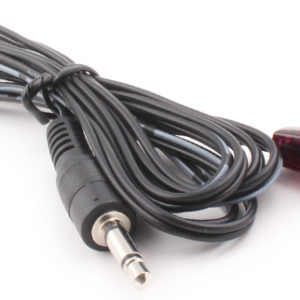 Smart-Avi IR Emitter 6’ Single LED
1 × 69.00 د.إ
Smart-Avi IR Emitter 6’ Single LED
1 × 69.00 د.إ 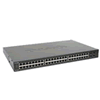 48-port 10/100/1000Mbps Managed L2 Switch with 4-port Combo SFP
1 × 5,385.00 د.إ
48-port 10/100/1000Mbps Managed L2 Switch with 4-port Combo SFP
1 × 5,385.00 د.إ 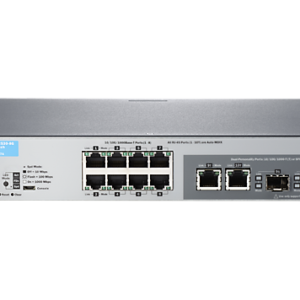 HP Aruba J9777A 2530 Series 2530-8G 8 x Ports 1000Base-T + 2 Ports Dual-Personality RJ-45/SFP Layer2 Managed 1U Rack-Mountable Gigabit Ethernet Network Switch
1 × 1,999.00 د.إ
HP Aruba J9777A 2530 Series 2530-8G 8 x Ports 1000Base-T + 2 Ports Dual-Personality RJ-45/SFP Layer2 Managed 1U Rack-Mountable Gigabit Ethernet Network Switch
1 × 1,999.00 د.إ 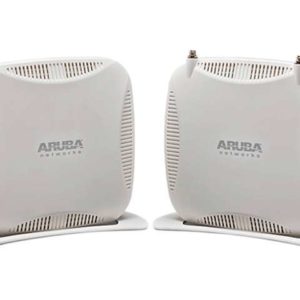 Aruba RAP-100-MNT RAP-100 Series Access Point Wall and Ceiling Mount Kit
1 × 259.00 د.إ
Aruba RAP-100-MNT RAP-100 Series Access Point Wall and Ceiling Mount Kit
1 × 259.00 د.إ  Toshiba PH3400U-1I72 4TB 3.5in 6Gbps 7.2K RPM Desktop SATA HDD
1 × 1,119.00 د.إ
Toshiba PH3400U-1I72 4TB 3.5in 6Gbps 7.2K RPM Desktop SATA HDD
1 × 1,119.00 د.إ  Sennheiser AVX-ME2 SET Digital Camera-Mount Wireless Omni Lavalier Microphone System (1.9 GHz)
1 × 3,499.00 د.إ
Sennheiser AVX-ME2 SET Digital Camera-Mount Wireless Omni Lavalier Microphone System (1.9 GHz)
1 × 3,499.00 د.إ 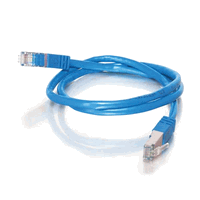 C2G 100ft CAT5e Shielded (STP) Patch Cable - Blue
1 × 299.00 د.إ
C2G 100ft CAT5e Shielded (STP) Patch Cable - Blue
1 × 299.00 د.إ 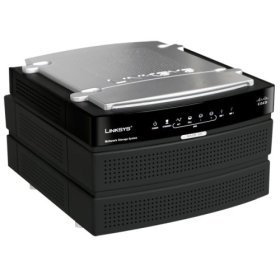 Linksys Network Storage System with 2 Bays
1 × 999.00 د.إ
Linksys Network Storage System with 2 Bays
1 × 999.00 د.إ  Xerox Phaser 3124 printer
1 × 499.00 د.إ
Xerox Phaser 3124 printer
1 × 499.00 د.إ 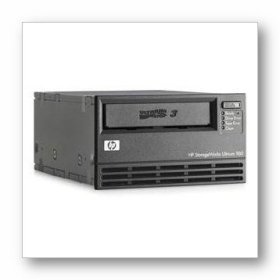 HP Ultrium 960 Internal Tape Drive
1 × 7,500.00 د.إ
HP Ultrium 960 Internal Tape Drive
1 × 7,500.00 د.إ 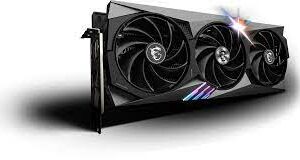 MSI GeForce RTX 4090 GAMING X TRIO Graphics Card
1 × 18,999.00 د.إ
MSI GeForce RTX 4090 GAMING X TRIO Graphics Card
1 × 18,999.00 د.إ 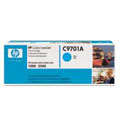 HP C9701A Cyan Toner Cartridge f0r1500 & 2500 series
1 × 369.00 د.إ
HP C9701A Cyan Toner Cartridge f0r1500 & 2500 series
1 × 369.00 د.إ 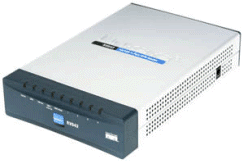 Cisco Linksys RV082 8-port 10/100 Dual WAN VPN Router
1 × 1,299.00 د.إ
Cisco Linksys RV082 8-port 10/100 Dual WAN VPN Router
1 × 1,299.00 د.إ 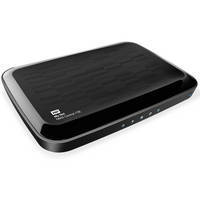 WD ROUTER WIFI MY NET N900 CENTRAL WITH 1TB HDD BUILT IN STORAGE345.00
1 × 439.00 د.إ
WD ROUTER WIFI MY NET N900 CENTRAL WITH 1TB HDD BUILT IN STORAGE345.00
1 × 439.00 د.إ  04 3550600
04 3550600 052 7036860
052 7036860


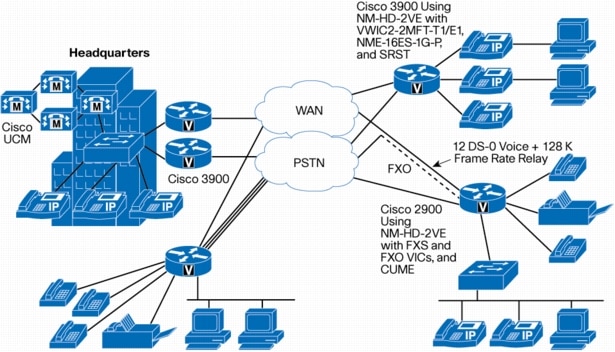
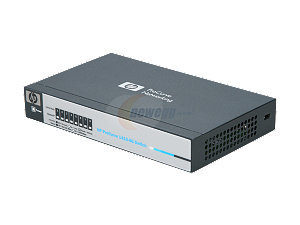
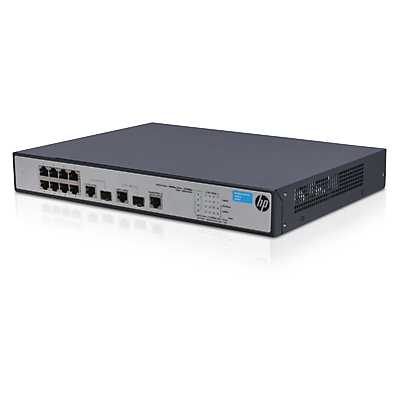
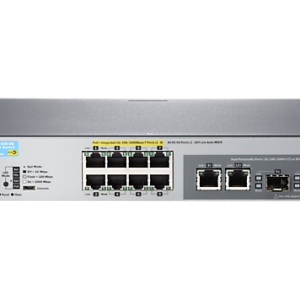
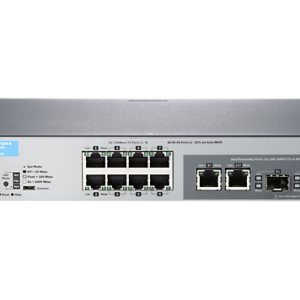

There are no reviews yet.